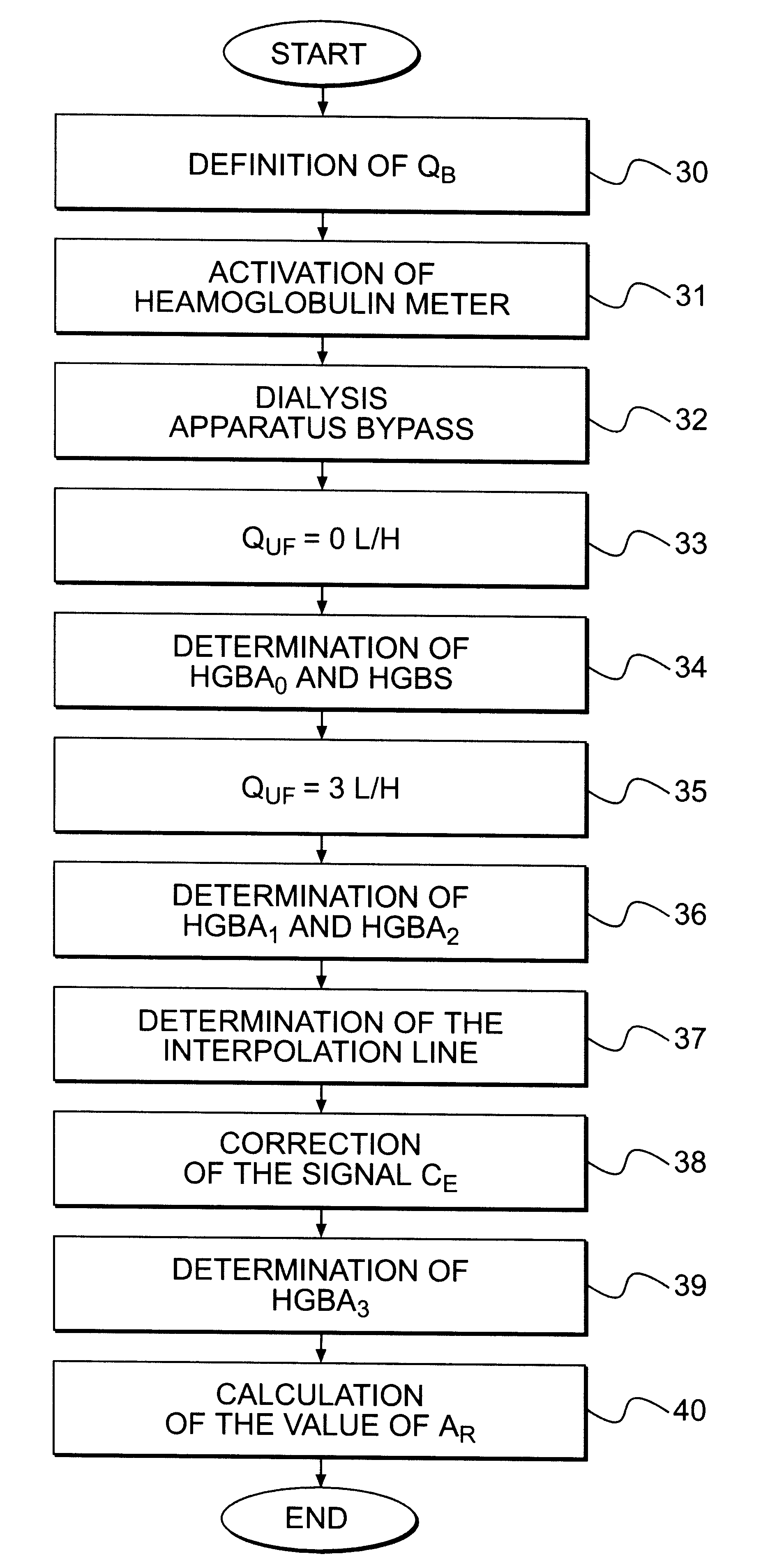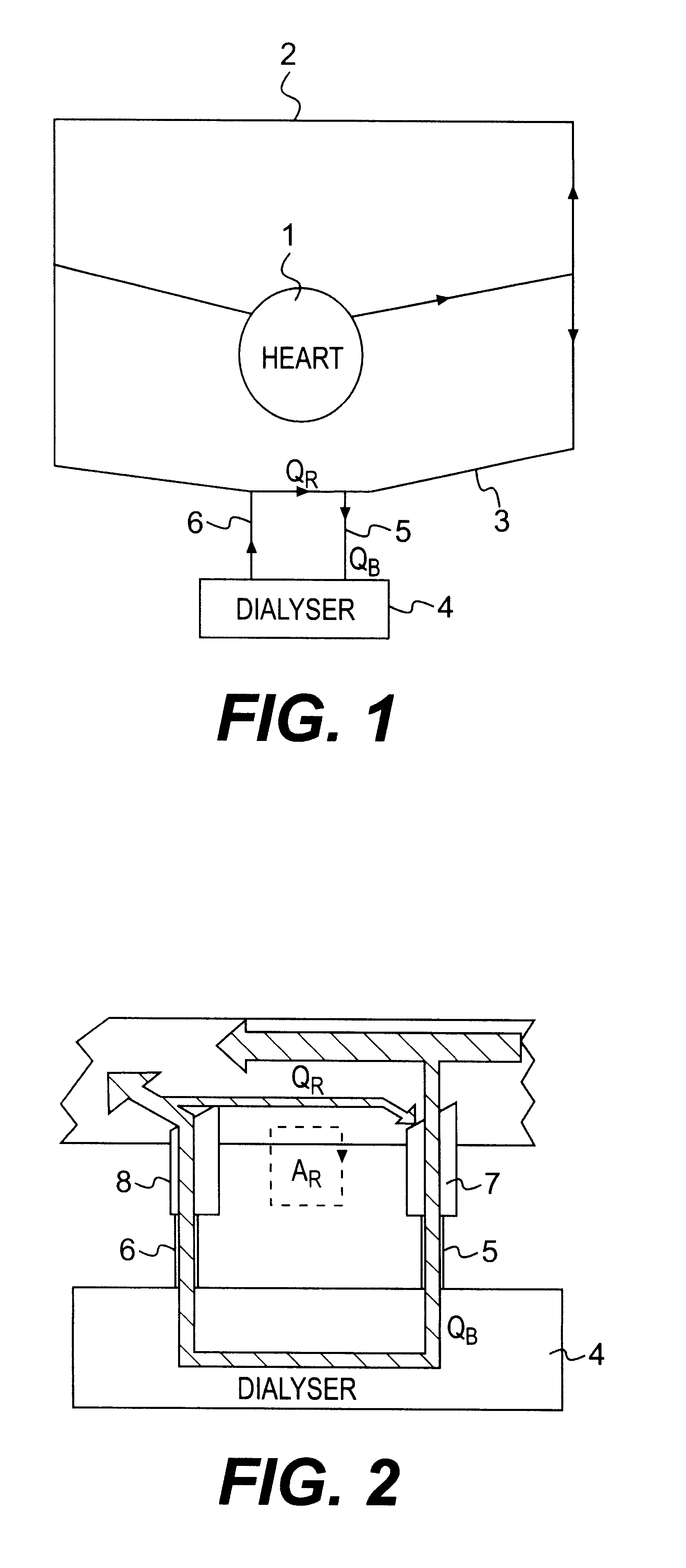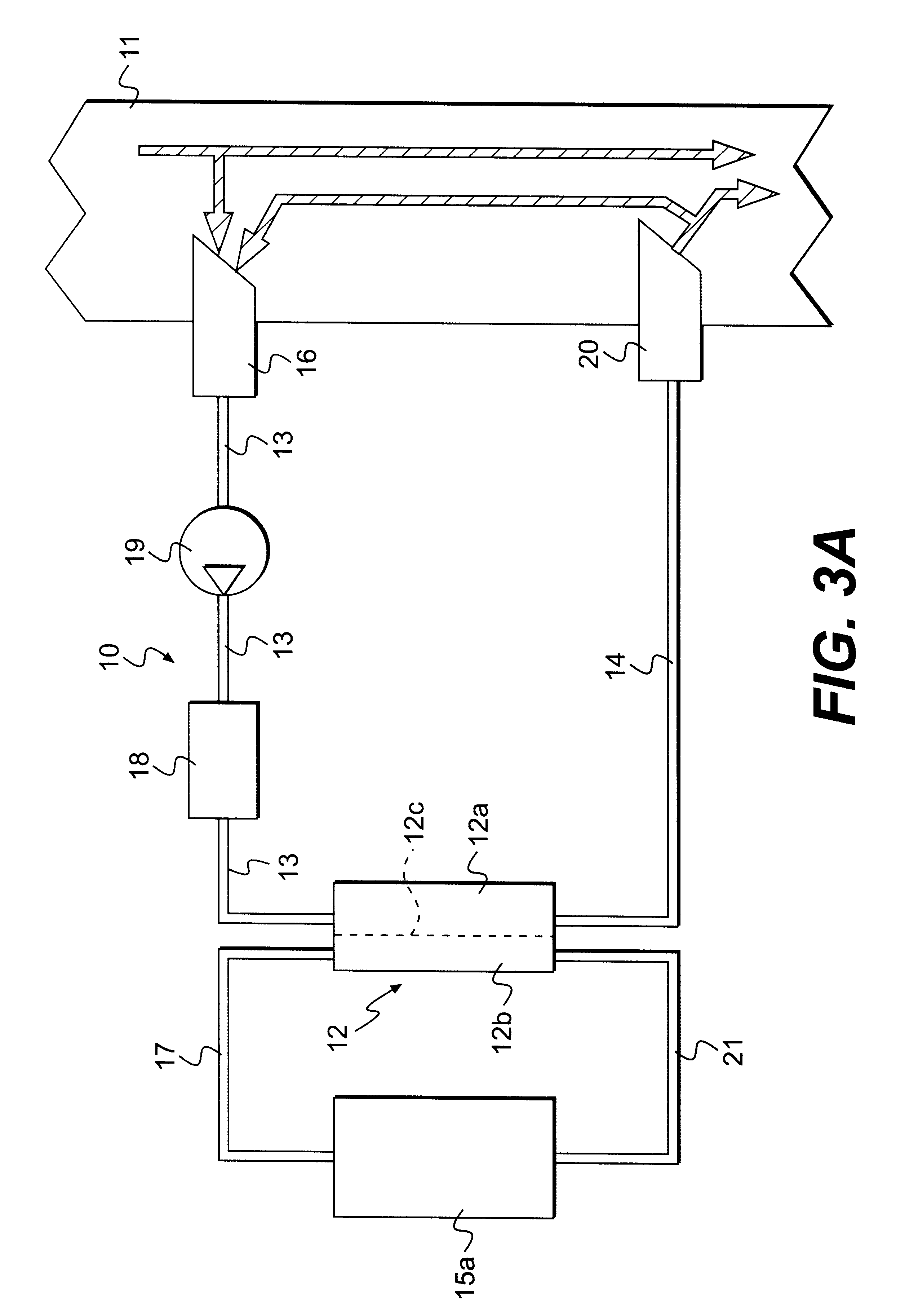Method for determining the recirculation of blood in a vascular access and a system for implementing same
- Summary
- Abstract
- Description
- Claims
- Application Information
AI Technical Summary
Problems solved by technology
Method used
Image
Examples
Embodiment Construction
In FIGS. 3A & 3B, the reference 10 denotes an extracorporeal circuit for treating blood, which is connected to a fistula 11 (vascular access) of a patient who is being subjected to a dialysis treatment. FIGS. 3A & 3B represent only the elements of a dialysis system which are useful for understanding the method according to the invention.
The extracorporeal circuit 10 comprises a dialyser 12, having a blood compartment 12a and a compartment 12b for the dialysis liquid which are separated by a semipermeable membrane 12c. An arterial line 13 connects the patient's fistula 11 to an inlet of the blood compartment 12a, and a venous line 14 connects an outlet of the blood compartment 12a to the fistula 11. The arterial line 13 and the venous line 14 are connected to the fistula 11 by means of cannulas 16, 20, the arterial cannula 16 being fitted upstream of the venous cannula 20, relative to the direction in which the blood circulates in the fistula 11. In the direction in which the blood c...
PUM
 Login to View More
Login to View More Abstract
Description
Claims
Application Information
 Login to View More
Login to View More - R&D
- Intellectual Property
- Life Sciences
- Materials
- Tech Scout
- Unparalleled Data Quality
- Higher Quality Content
- 60% Fewer Hallucinations
Browse by: Latest US Patents, China's latest patents, Technical Efficacy Thesaurus, Application Domain, Technology Topic, Popular Technical Reports.
© 2025 PatSnap. All rights reserved.Legal|Privacy policy|Modern Slavery Act Transparency Statement|Sitemap|About US| Contact US: help@patsnap.com



